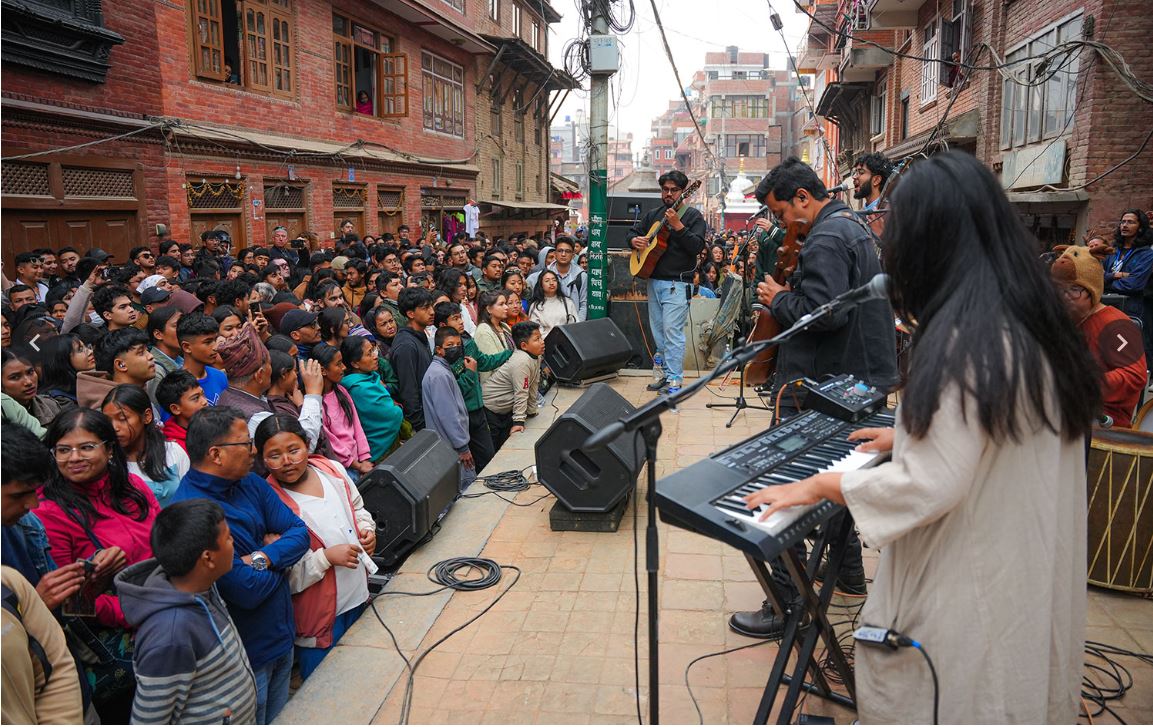
As Nepal embraces the monsoon season, its lush green landscapes and newfound vitality offer a respite from the scorching heat. However, alongside the monsoon’s blessings comes an unwelcome visitor – the dreaded dengue outbreak.
The situation demands attention as the virus is spreading rapidly across the country. Eastern Nepal has been hit by it most as the Dharan sub-metropolis was forced to shut down schools to fight the dengue outbreak.
While the post-monsoon period has historically been considered the peak season for dengue transmissions, the virus has now entrenched itself, leading to outbreaks throughout the year. This calls for collective action from all citizens to confront and cope with this menacing threat.
Not a new case

Dengue is not a new adversary for Nepal; it has wreaked havoc in previous years. In 2022, the country witnessed 88 deaths and over 54,000 infections, with the virus spreading to all 77 districts. Hospitals in the Kathmandu valley were inundated with dengue patients, and basic medicines like paracetamol were in short supply.
The alarming death rate from dengue emphasises the urgent need to address the factors that contribute to its deadly impact. Experts cite several reasons for the high death toll, including negligence in case management, delayed adoption of preventive measures, lack of public awareness, and delayed healthcare seeking after infection.
The presence of multiple dengue virus serotypes further complicates the situation. To mitigate the impact of dengue outbreaks, a comprehensive strategy must be implemented, addressing these root causes head-on.
Time to act

The responsibility to identify and eliminate mosquito breeding sites rests with all of us. By regularly inspecting and cleaning our surroundings, we can break the transmission chain and protect our families and neighbours.
Public awareness plays a pivotal role in our fight against dengue. We must educate ourselves and our communities about dengue symptoms, transmission, and preventive measures.
Aedes aegypti and Aedes albopictus, the mosquitoes responsible for dengue transmission, breed in clean water and bite during day time. Simple measures, such as covering water tanks and properly disposing of plastic containers, can significantly reduce the risk of dengue transmission.
Timely detection and access to appropriate medical care are crucial in reducing fatalities. Although there is no specific cure for dengue, early identification of the disease can make a substantial difference in patient outcomes.
Healthcare facilities must be equipped to handle potential outbreaks, with a steady supply of essential medications and trained medical professionals to identify and treat dengue promptly. Beyond dengue, our efforts must encompass a holistic approach to address the broader challenge of vector-borne diseases.
The risk is high

The same mosquitoes responsible for dengue transmission also carry other life-threatening diseases such as chikungunya, yellow fever, and Zika. Integrated vector management strategies must be adopted to tackle these health threats simultaneously.
To combat dengue outbreaks effectively, entomologists stress the importance of sustainable solutions for mosquito control. Proper waste management and regular mosquito breeding site inspections are essential components of these solutions.
Embracing sustainable practices will not only combat dengue but also contribute to overall public health and environmental well-being.
This battle against dengue requires a united front, with the government and citizens working together. While the government must take the lead in implementing preventive measures and providing healthcare support, citizens must actively participate and support these initiatives. Collaboration, backed by financial and logistical support, is the key to success in combatting this deadly disease.
In the face of the looming dengue outbreak and the monsoon’s unpredictable nature, we stand at a crossroads – a choice between complacency and collective action.
Let us not wait for tragedy to strike our doorsteps before we act. The time to unite is now, to forge an unbreakable shield against dengue’s deadly advance. Together, we possess the strength to defy this annual scourge, protect our loved ones, and ensure that no life is lost in vain.



















